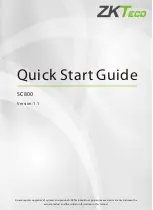
Link-up and update
8.3 Time monitoring
CPU 410 Process Automation/CPU 410 SMART
System Manual, 05/2017, A5E31622160-AC
127
10.Determine the share of the maximum inhibit time for I/O classes > 15 that is required by
the minimum I/O retention time (T
P15_OD
):
T
P15_OD
= 50 ms + min. I/O retention time [2]
Note
If T
P15_OD
> T
P15_HW
, stop the calculation here. Possible remedies are shown below the
following example calculation. Make appropriate changes and then restart the calculation
at 1.
11.Using the information in Chapter Performance values for link-up and update
(Page 130), calculate the share of the maximum inhibit time for priority classes > 15 that
is required by the user program (T
P15_AWP
).
Note
If T
P15_AWP
> T
P15_HW
, stop the calculation here. Possible remedies are shown below the
following example calculation. Make appropriate changes and then restart the calculation
at 1.
12.The recommended value for the maximum inhibit time for priority classes > 15 is now
obtained from:
T
P15 =
MAX (T
P15_AWP
, T
P15_OD
) [3]
Example of the calculation of T
P15
In the next steps, we take an existing system configuration and define the maximum
permitted time span of an update, during which the operating system does not execute any
programs or I/O updates.
There are two DP master systems and one IO subsystem: DP master system_1 is connected
via the DP interface of the CPU, and DP master system_2 is connected to the CPU via an
external DP master interface. The IO subsystem is connected via the integrated Ethernet
interface.
1.
Based on the bus parameters in STEP 7:
T
TR_1
= 25 ms
T
TR_2
= 30 ms
T
DP_UM_1
= 100 ms
T
DP_UM_2
= 80 ms
2.
Based on the configuration in STEP 7:
T
max_Akt
= 8 ms
T
PN_UM
= 110 ms
3.
Based on the technical data of the DP slaves used:
T
SLAVE_UM_1
= 30 ms
T
SLAVE_UM_2
= 50 ms
















































